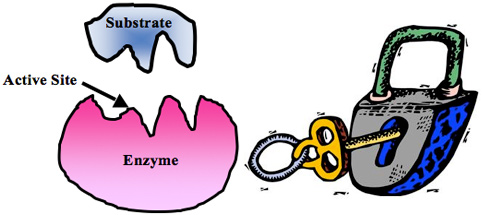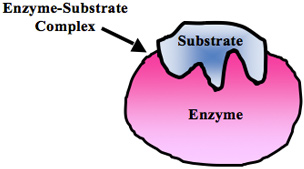
In reactions involving enzymes, the molecules at the beginning of the process are called substrates, and the enzyme converts them into different molecules, called the products. Almost all processes in a biological cell need enzymes to occur at significant rates.
The substrates bind to a site on the enzyme called the active site. The active site and the substrate have complementary shapes. The fit is so specific that the active site and substrates are often compared to a lock and key.

When the enzyme and the substrate are joined at the active site, this is called the enzyme-substrate complex.

After the enzyme has performed its work, the product or products drift away. The enzyme is then free to function in another chemical reaction. It is very important to remember that enzymes are not used up during a reaction.
